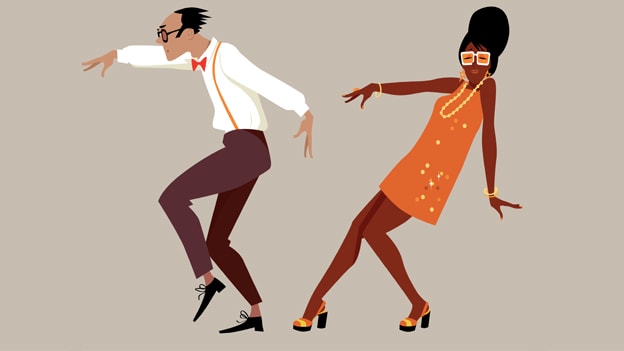Breaking stereotypes – Introducing Dance for Employee Well-Being

Dance is a form of art which exists since time immemorial in all cultures, in some or the other form. It is believed that dancing is in our DNA. It has been scientifically proven that dance activates the reward centres in the human brain. Dance Psychology is in vogue in today’s corporate world. Dancing amazingly helps in maximising cognitive function in employees and visualising movements Improves muscle memory.
The thinking behind performing dance is - “it activates kinesthetic, rational and emotional function of the brain”
We humans refrain from doing anything that’s not enjoyable. With dancing, the fun remains intact. HR in corporate have started noticing the benefits of Dancing and some organisation have Trainers who come and take classes in batches in office premises. Highlighting a little more on these corporate classes, a professional from IT Company states that it is at the request of the employees that such classes are held in the company. Employees are vouching on Group fitness thereby seeing a surge in popularity of Zumba classes in offices. Many corporate are encouraging their employees to practice this and have tied up with institutes wherein employees can use their services at discounted prices as a part of employee benefit and engagement strategy.
Let’s have a closer look on the top five benefits of dancing which will pleasantly surprise you.
1. The Creative Problem Solver
Through understanding others' emotions and intentions, dancers make effective motor decisions which help in boosting creativity and problem-solving ability. According to researchers at Sheffield and York University, five minutes of freestyle dance induces creativity and helps in solving complex problems. In one of the exercises, participants were asked to sit or listen to music or practice freestyle dancing. The ones who chose the third option showed remarkable improvements in creative problem-solving.
2. Harbinger of collaboration
Humans are born to groove. Our brains are wired to connect to people, even if unconsciously. Dance springs from a human desire for personal expression and social connection thereby stimulating a bond of collaboration.
3. Self Esteem Developer
Dancing also improves self-confidence and self-esteem by providing an opportunity for people to express themselves. The fear of being awkward fades away gradually through practice. That’s the beauty of recreational dancing. When one dance for fun and start braving the dance floor, the anxiety of bad timing and looking awkward starts to evaporate. One learns new movements, gain confidence, and break through the fear.
4. Anti-Depressant
Dancing characterised by relaxed, free flowing movements improves mood suggests a study conducted by Andrew Lane at the University of Wolverhampton. It triggers the release of feel-good hormones like serotonin and endorphins. Researchers have used dancing as a technique to reduce feelings of depression. It helps in letting go the stress and worries of the past or future.
5. Health Enabler
Undoubtedly, dancing has some major health perks. It can give you more than traditional cardio. It increases stamina, strengthens bones and muscles, improves balance, agility, coordination, power, reactivity and speed. The findings, published in the New England Journal of Medicine, suggest that getting footloose on a regular basis is linked with a 76 percent reduction in dementia risk.
Dancing propels synchronisation of the Cerebrum and Cerebellum thereby creating superfluidity. Dance has been used therapeutically for thousands of years. Research has found that using dance movements as a form of therapy activates several brain functions at once. Dancing gives the potential to accept one’s body as it is and appreciate its own beauty, movement, and rhythm. It also allows you to change the perception of yourself from worst enemy to best friend. There is a dancer in all of us. You really don't need a thing to get started. It's time to get your groove on. In the name of science, HR should reclaim, rebrand and embrace Dance as a tool to foster well-being. Let this neuroscience of speaking with action and movement break the stereotypes.















